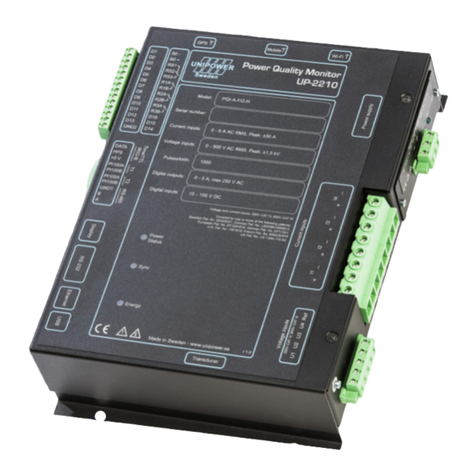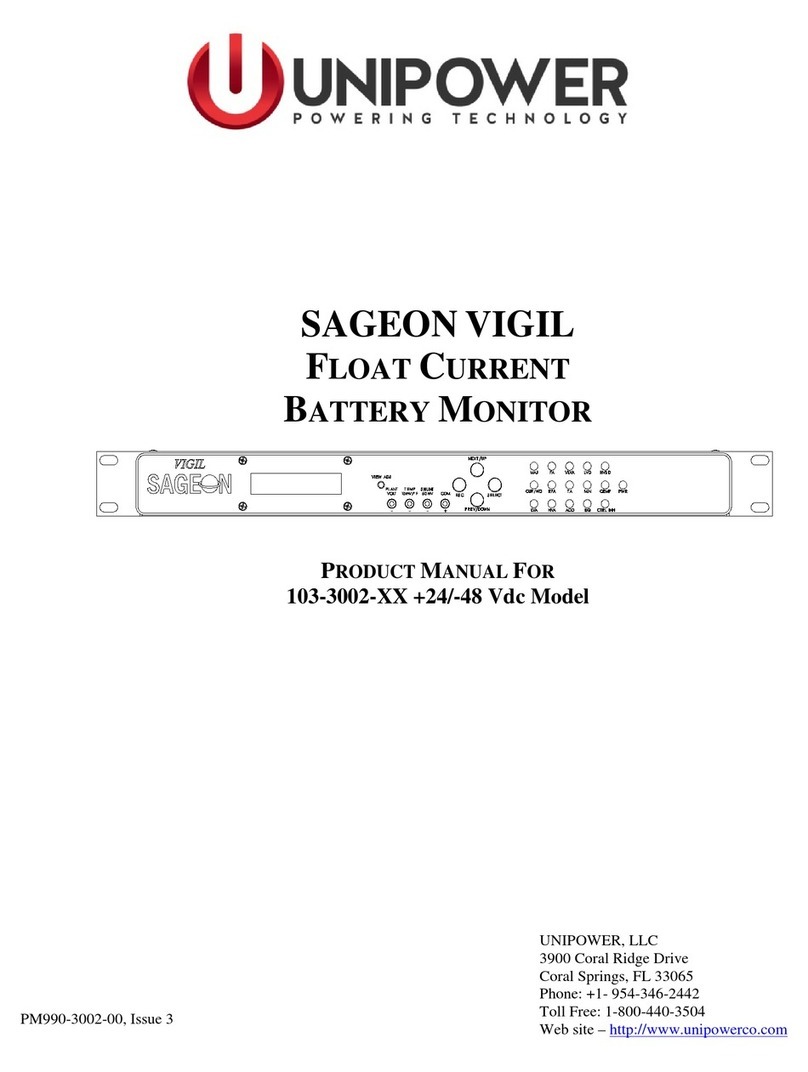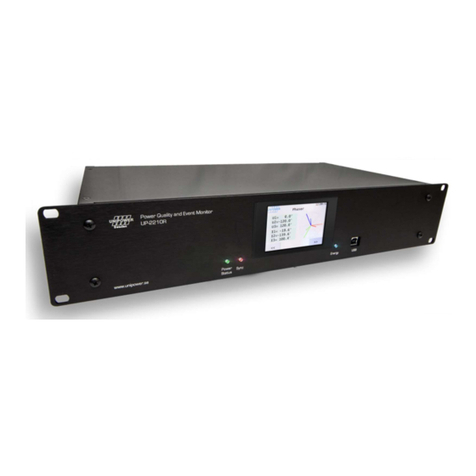
5Combicontrol PIC432B
4 System description
4.1Generally
In the following the unit’s features will be descibed in
details including a description of the various control
algorithms.
4.2 pH/mV measurement
The pH/mV input stage consists of a circuit with very
high input resistance and extremely low input current.
Afterthe signal treatment the signal is transmitted through
a galvanic isolation system to the micro processor, which
handles the display- and control functions etc.
4.3 Temperature measurement
The temperature sensor is supplied with a current of app.
2.5mA and the generated mV signal is amplified and
transmitted to the micro processor, where it is linearized.
4.4 Temperature compensation
If automatic temperature comensation is selected, this is
done by the micro processor on the basis of the measured
temperature. The unit also gives the possibility of using a
fixed temperature as basis of the compensation; Select
‘Set’ under parameter#13 and enter the desired tempera-
ture under parameter #14.
Note! The mV measurement is not compensated.
4.5 Manual zero adjustment
If a zero adjustment is required (Valid only for pH), please
select ‘Zero’ with the ‘Mode’-key and the display value
may be adjusted with the arrow keys to correspond with a
knownresolution.
The adjustment does not affect the mV measurement.
4.6 Manual Slope adjustment
Adjusting the Slope is done by selecting ‘Slope’ with the
‘Mode’-key and adjusting with the arrow keys (Valid for
both pH and Redox). If the unit is set up to use dual slope
(Valid only for pH), two slope values are stored. Using
single slope only one slope (gain) is stored, which will be
used for the whole range. By pH measurement the
adjustment does not affect the mV measurement, which
may then be used as electrode check.
4.7Automaticcalibration
Using Auto-Set the ‘Mode’-key is used to select the
function and the text ‘SEt0’ is shown in the display tog-
gled with the actual measurement. Using the arrow keys
also the ‘SEt1’and ‘SEt2’ may be selected. To be able to
useAuto-Set the known resolutions must be programmed
into the unit under parameter Parameter #22 and Para-
meter #23. The range of the resolutions is listet below:
‘SEt0’ = pH7 (always pH7,00)
‘SEt1’ = pH10 (8,00 pH 13,00)
‘SEt2’ = pH4 (1,00 pH 6,00)
When the buffer resolution with the value corresponding
to the selected Auto-Set point is chosen, please activate
the ‘Set’-key. If the calibration is valid, the display will
stop flashing the measurement value and will only show
‘SEtx’. If the display continues to flash, the buffer reso-
lution lies outside the valid range which is the program-
med value ± 1 pH.
4.8Control features
Limit A and Limit B may be programmed independently
to one of the following control modes: 1. On/Off, 2. Pro-
portionalfrequency,3. Proportional time. 4.APC-function,
which is Analogue Proportional Control. The limits may
be chosen as Max. or Min. limits. The different control
modes may be related to any of the three possible
measurements.
Limit C and Limit D both run On/Off control if enabled.
Both limits may be selected independently as max.- og
min.-limits.
Limit C may only be enabled if Limit A is selected as
APC. Limit C activates Relay A. The limit is related to
the measurement of Limit A.
Limit D may only be enabled if Limit B is selected as
APC. Limit D activates Relay B. The limit is related to
the measurement of Limit B.
4.9Parametersetting
For selection and description of the various parameters
please refer to the parameter list on page 10. If the setup
is to be done via ‘PICSetup’, please refer to the paragraph
describing the PC-software on page 6.
4.10On/Offcontrol
When the measurement crosses the chosen setpoint, the
correspondingrelaywillopenand will not close again until
the measurement exceeds the hysteresis band.
4.11 Hysteresis band
Ahysteresis band always lies above a Min limit and below
a Max limit.
4.12Proportionalband
The proportional band is a range where a variable control
isperformed.Aproportional band always lies above a Min
limit and below a Max limit.
4.13Basic frequency
The basic frequencies for LimitAand Limit B may be set
from1 imp/min to 180 imp/min.
4.14Proportionalfrequency control(PI)
If the measurement lies outside the proportional band the
relay will pulsate with the basic frequency. Inside the pro-
portional band the frequency is changed linearly towards
zero as the the measurement approaches the setpoint.
4.15Timeproportionalcontrol
The frequency is constant = the basic frequency. Instead
the duty cycle is changed according to the same principle
as for PI control. If the measurement lies outside the pro-
portional band the relay is closed permanently and open
permanently if the limit is exceeded.
4.16Analogueproportionalcontrol
SelectingAPC for LimitAcauses the analogue output #2
to be used asAPC-output. Limit B always controls output
#3 atAPC. APC has the following algorithm:






























